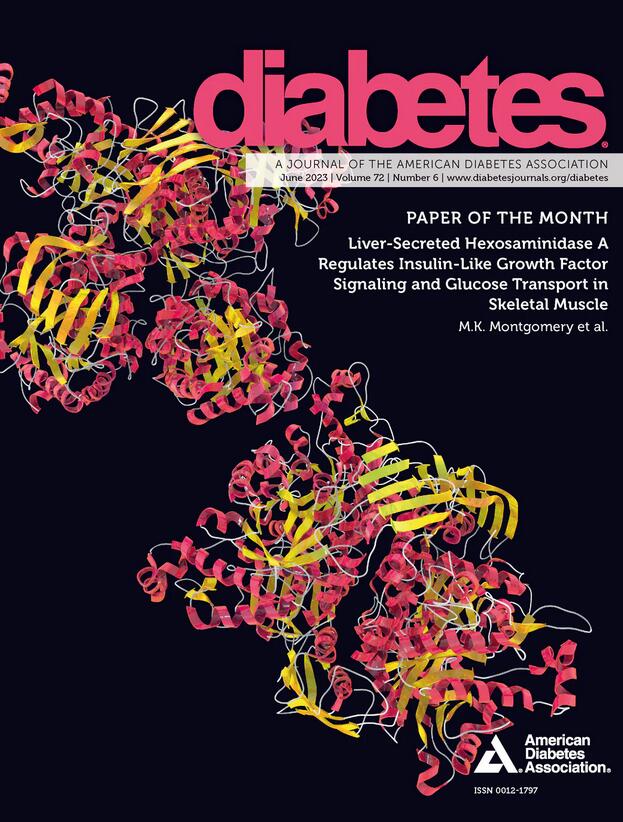1151-P:持续血糖监测(CGM)在儿科医院糖尿病管理中的用户体验
IF 7.5
1区 医学
Q1 ENDOCRINOLOGY & METABOLISM
引用次数: 0
摘要
前言和目的:指南认可在住院期间使用CGM并给予适当支持。然而,障碍和促进最佳实施在儿科医院设置是未知的。我们的目的是评估实施儿科医院CGM政策前后的用户体验。方法:我们于2024年9月实施了一项支持使用个人CGM减少手指刺的医院政策。对糖尿病患者(pwd)或其监护人、护士和非内分泌提供者(住院医师和高级执业医师)进行调查,了解他们在实施CGM之前和之后在医院就诊期间使用CGM的经历。调查包括自定义李克特量表和自由回答问题。医院工作人员还完成了修改后的系统可用性量表(SUS)。SUS评分采用双尾t检验进行比较。结果:基线时有40名残疾人士、22名护士和12名服务提供者完成调查,实施后有9名残疾人士、37名护士和12名服务提供者完成调查。PwD患者对医院血糖管理的满意度总体较高(90%)。实施后,残疾人报告对护士使用CGM的能力更有信心,更倾向于使用CGM给胰岛素,并且更少中断。护士SUS评分增加16.8±5.0分(平均差值±SE) (p=0.002),服务人员SUS评分增加13.1±7.2分(p=0.09)。工作人员报告了对易用性、系统集成、一致性和快速学习系统的能力的改进看法。员工认为CGM工作流增加了不必要的任务仍然是一个主要障碍。虽然残疾人和护士都对护士使用CGM的能力有很高的信心,但两组都希望对员工进行更多的教育。结论:儿科医院CGM政策的实施与改善PwD及其工作人员的经验相关。识别和解决影响用户体验的障碍,同时评估CGM的准确性、安全事件和血糖结果,以促进项目的可持续性。李开复:没有。H. Ortega:没有。K. Belanger:没有。琼斯:没有。J.J.H. Lee:没有。C.周帕默:没有。苏亚雷斯:没有。D.M. Maahs:咨询小组;雅培、美敦力公司。研究支持;, Dexcom公司将公司。顾问;赛诺菲。P. Prahalad:顾问;赛诺菲。R. Lal:顾问;雅培、Biolinq、毛细管生物医学、Gluroo、PhysioLogic Devices、Portal胰岛素、赛诺菲、Tidepool。顾问小组;Provention Bio, Inc ., Microbion, Microbion, Lilly Diabetes。研究支持;胰岛素公司,美敦力公司,串联糖尿病护理公司,中国医药保健公司。ms . Hughes:顾问;, Dexcom公司将公司。研究支持;Tandem Diabetes Care, Inc., Medtronic,胰岛素公司,Sinocare公司。S. Shah:研究支持;MannKind公司。资助美国国立卫生研究院(5K12DK122550-05, DK007217-47),斯坦福大学孕产妇研究所;儿童健康研究所本文章由计算机程序翻译,如有差异,请以英文原文为准。
1151-P: Continuous Glucose Monitoring (CGM) User Experience in Pediatric Hospital Diabetes Management
Introduction and Objective: Guidelines endorse CGM use during hospitalizations with proper support. However, barriers and facilitators for optimal implementation in the pediatric hospital setting are unknown. We aimed to evaluate user experiences before and after implementing a pediatric hospital CGM policy. Methods: In September 2024, we implemented a hospital policy to support using personal CGM to reduce fingersticks. People with diabetes (PwDs) or their guardians, nurses, and non-endocrine providers (residents and advance practice providers) were surveyed about their experiences using CGM during hospital encounters before and after implementation. Surveys included custom Likert-scale and free response questions. Hospital staff also completed a modified System Usability Scale (SUS). SUS scores were compared using two-tailed t-tests. Results: Surveys were completed by 40 PwDs, 22 nurses, and 12 providers at baseline and 9 PwDs, 37 nurses, and 12 providers post-implementation. PwD satisfaction with hospital glucose management was high throughout (>90%). Post-implementation, PwDs reported increased confidence in nurses’ ability to use CGM, more preference for using CGM for insulin dosing, and fewer interruptions. SUS scores increased by 16.8 ± 5.0 (mean difference ± SE) for nurses (p=0.002) and by 13.1 ± 7.2 for providers (p=0.09). Staff reported improved perceptions about ease of use, system integration, consistency, and ability to learn the system quickly. Staff perception that CGM workflow adds unnecessary tasks remained a major barrier. Though PwDs and nurses both report high confidence in nurses’ ability to use CGM, both groups wanted more staff education. Conclusion: Implementation of a pediatric hospital CGM policy was associated with improved experiences for PwD and staff. Identifying and addressing barriers to user experience, along with assessment of CGM accuracy, safety events, and glycemic outcomes are needed to promote program sustainability. Disclosure M. Lee: None. H. Ortega: None. K. Belanger: None. S.M. Jones: None. J.J.H. Lee: None. C. Chow-Parmer: None. C. Suarez: None. D.M. Maahs: Advisory Panel; Abbott, Medtronic. Research Support; Dexcom, Inc. Consultant; Sanofi. P. Prahalad: Consultant; Sanofi. R. Lal: Consultant; Abbott, Biolinq, Capillary Biomedical, Inc, Gluroo, PhysioLogic Devices, Portal Insulin, Sanofi, Tidepool. Advisory Panel; Provention Bio, Inc, Provention Bio, Inc, Microbion, Microbion, Lilly Diabetes. Research Support; Insulet Corporation, Medtronic, Tandem Diabetes Care, Inc, Sinocare Inc. M.S. Hughes: Consultant; Dexcom, Inc. Research Support; Tandem Diabetes Care, Inc, Medtronic, Insulet Corporation, Sinocare Inc. S. Shah: Research Support; MannKind Corporation. Funding National Institute of Health (5K12DK122550-05, DK007217-47), Stanford Maternal & Child Health Research Institute
求助全文
通过发布文献求助,成功后即可免费获取论文全文。
去求助
来源期刊

Diabetes
医学-内分泌学与代谢
CiteScore
12.50
自引率
2.60%
发文量
1968
审稿时长
1 months
期刊介绍:
Diabetes is a scientific journal that publishes original research exploring the physiological and pathophysiological aspects of diabetes mellitus. We encourage submissions of manuscripts pertaining to laboratory, animal, or human research, covering a wide range of topics. Our primary focus is on investigative reports investigating various aspects such as the development and progression of diabetes, along with its associated complications. We also welcome studies delving into normal and pathological pancreatic islet function and intermediary metabolism, as well as exploring the mechanisms of drug and hormone action from a pharmacological perspective. Additionally, we encourage submissions that delve into the biochemical and molecular aspects of both normal and abnormal biological processes.
However, it is important to note that we do not publish studies relating to diabetes education or the application of accepted therapeutic and diagnostic approaches to patients with diabetes mellitus. Our aim is to provide a platform for research that contributes to advancing our understanding of the underlying mechanisms and processes of diabetes.
 求助内容:
求助内容: 应助结果提醒方式:
应助结果提醒方式:


